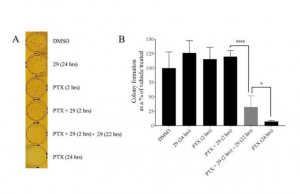NASA headed to Saturn’s ‘Titan’ moon in 2026 to look for signs of past or present life
DALLAS (SMU) – Researchers from Southern Methodist University (SMU) could help determine if Saturn’s icy moon – Titan – has ever been home to life long before NASA completes an exploratory visit to its surface by a drone helicopter.

NASA announced in late June that its “Dragonfly” mission would launch toward Saturn’s largest moon in 2026, expecting to arrive in 2034. The goal of the mission is to use a rotorcraft to visit dozens of promising locations on Titan to investigate the chemistry, atmospheric and surface properties that could lead to life.
SMU was awarded a $195,000 grant, also in June, to reproduce what is happening on Titan in a laboratory setting. The project, funded by the Houston-based Welch Foundation, will be led by Tom Runčevski, an assistant professor of chemistry in SMU’s Dedman College of Humanities and Sciences. SMU graduate student Christina McConville was also awarded a fellowship by the Texas Space Grant Consortium to help with the project.
Before the rotorcraft lands on Titan, chemists from SMU will be recreating the conditions on Titan in multiple glass cylinders — each the size of a needle top — so they can learn about what kind of chemical structures could form on Titan’s surface. The knowledge on these structures can ultimately help assess the possibility of life on Titan — whether in the past, present or future.
Scientists have long considered Titan to be very similar to pre-biotic Earth, even though it is a frigid world much farther from the sun than our planet. Titan is the only moon in the solar system to have a dense atmosphere like Earth, and is also the only world other than Earth to have standing bodies of liquids, including lakes, rivers and seas, on its surface. In addition, NASA scientists believe Titan may have a subsurface ocean of water.
“Titan is a hostile place, with lakes and seas of liquid methane, and rains and storms of methane. The storms carry organic molecules produced in the atmosphere to the surface, and at the surface conditions, only methane, ethane and propane are liquids. All other organic molecules are in their solid form – or, as we would call them on Earth, minerals,” Runčevski explained.
“We are interested in the chemical composition and crystal structure of these organic minerals, because it is believed that minerals played a key role in the origins of life on Earth,” he said. “Hence, our research may help assess these possibilities for strange “methanogenic” Titanean life.”
Runčevski added that any information that they get about the structure of Titan’s upper layer crust, which is made of organic minerals, could prove very useful to NASA’s Dragonfly mission.
In order to create these “Titans in a jar” at SMU, Runčevski said they will use information about the conditions on Titan that were obtained during the mission Cassini-Huygens, which ended two years ago.
“We can recreate this world step by step in a cylinder made of glass,” he said. “First, we will introduce water, which freezes into ice. Second, we will top that layer of ice with ethane that liquidizes as a ‘lake.’ Then we will fill the remaining cylinder with nitrogen.”
After that, they can introduce different molecules into the system, mimicking the rainfall. Lastly, they will “dry” the lakes by slightly raising the temperature and produce the surface of the moon. The cylinder that this moon will be created inside is specifically designed, so that multiple state-of-the-art experiments can be done and they can learn from the structure of the real Titan. Large parts of these experiments will be performed at research facilities that provide modern synchrotron and neutron radiation, such as Argonne National Laboratory in Illinois and the National Institute and Technology in Maryland.
Several media outlets have covered the news, including:
About SMU
SMU is the nationally ranked global research university in the dynamic city of Dallas. SMU’s alumni, faculty and nearly 12,000 students in seven degree-granting schools demonstrate an entrepreneurial spirit as they lead change in their professions, communities and the world.


